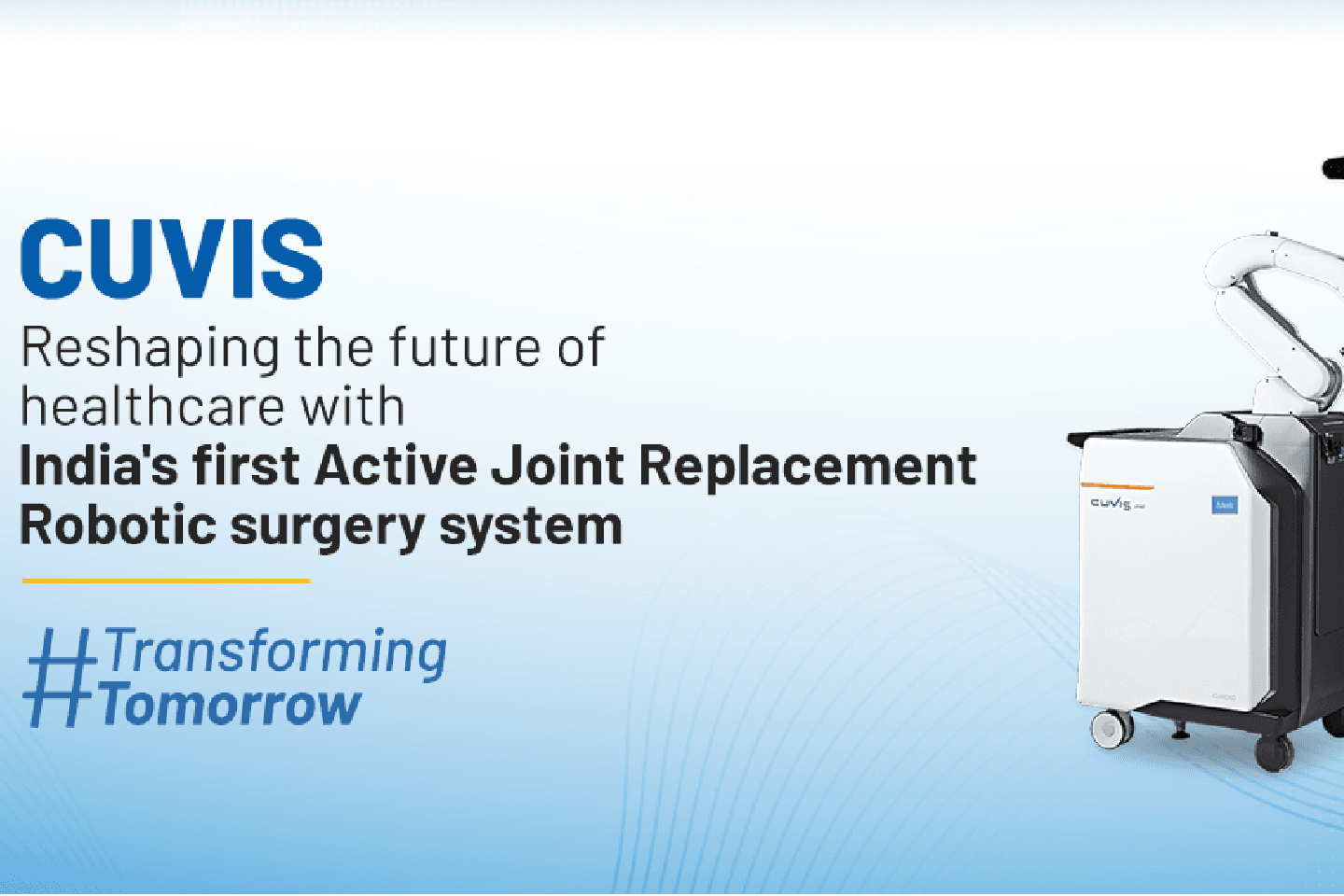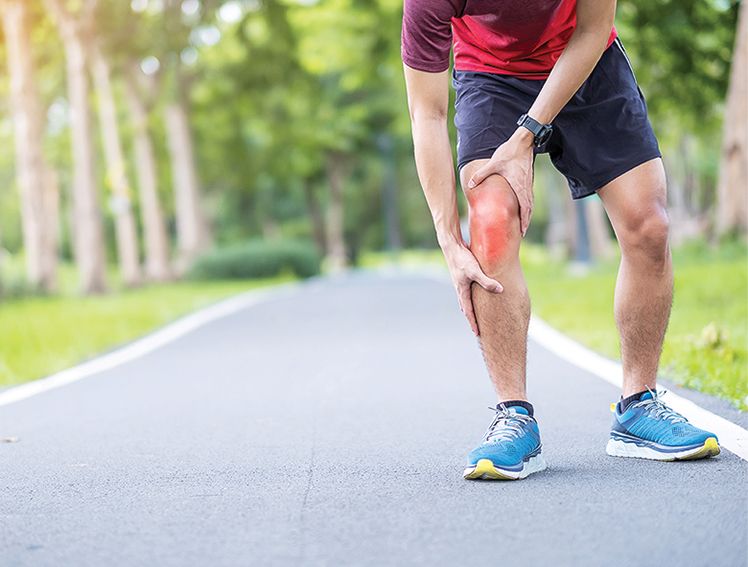
Enhancing Mobility: How Robotic Knee Replacement is Transforming Arthritis Treatment
Introduction
Many must have experienced this; others might have seen their loved ones struggling to cope with that debilitating pain, discomfort, and difficulty in moving and staying active resulting from the swelling or inflammation of one or more joints. The throbbing pain and aching joints make movement restricted, and life is tough and challenging for people suffering from such inflammation and swelling of joints.
Medical treatment and therapies have been constantly evolving and contributing to addressing the symptoms of the condition, known as Arthritis. Arthritis affects millions of people worldwide. With a sedentary lifestyle, obesity, and injury, Osteoarthritis is one of the types of arthritis that is reportedly on the rise globally. Rheumatoid Arthritis, another common type of arthritis, has more prevalence in women, with reports showing approx. 70% of the total population affected by this condition are women. Nearly 55% of these affected women are older than 55 years.
With these statistics, awareness of the disease and its treatment options become increasingly necessary to prevent and/or treat it promptly to avoid further damage to the joints.
This blog discusses arthritis, the role of Knee replacement surgery, and how Robotic knee replacement is transforming the treatment of arthritis.
All About Arthritis
Meaning- Arthritis is a disease affecting the joints. The inflammation and swelling of one or more of the joints cause pain and stiffness in the affected joints and difficulty in movements. There is tenderness or swelling in and around the affected joints. Arthritis commonly affects the knees, hips, hands, lower back, and feet.
Types- Arthritis is an umbrella term that refers to more than 100 different types of joint conditions. A few common types of arthritis include –
Osteoarthritis (OA) - mostly age-related, a degenerative disease of the joints resulting from the constant wear and tear of the joint cartilage.
Rheumatoid Arthritis (RA)- an autoimmune inflammatory disease caused when the body's immune system mistakenly attacks the synovial membrane of the joint. The joints get inflamed and cause pain.
Psoriatic Arthritis (PsA)- another autoimmune inflammatory disease that may result from skin psoriasis (a chronic skin condition causing patches, skin irritation, and rashes with scales.), causing inflammation and pain in the joints.
Gout- it is caused when uric acid gets excessively accumulated in the joints, resulting in inflammation and pain in the affected joints.
Ankylosing Arthritis- arthritis of the spine is caused when the vertebrae become rigid and fuse, causing pain and stiffness in the lower back over time.
Juvenile Arthritis (JA)- an autoimmune disease that affects children, where the immune system mistakenly attacks the synovial membrane and synovial fluid (it acts as a lubricant for the smooth moving of the joints) in the joint, causing it to swell.
Life With Arthritis - Arthritis has no cure. Once affected, the person must learn to deal, manage and/or cope with it. Life with arthritis could be demanding. Coping with the condition’s associated pain, discomfort, swelling and inflammation of joints, bone grating, cracking sound when moving, stiffness, and reduced mobility becomes challenging. The symptoms would vary depending upon the type of arthritis.
In general, everyday activities might seem difficult and stressful when your body is in pain with immobility taking over. Life does not remain the same anymore. The condition may worsen with time, and the associated pain is unpredictable, making it more stressful and depressing. Dependence on others for daily chores like cooking, washing, shopping, laundry, and cleaning could make one feel helpless, irritable, and frustrated, affecting one's self-worth.
Medications, home remedies, alternate treatment modalities, lifestyle changes, physical activity, positive outlook, pain, and stress management techniques help manage and cope with arthritis and its related challenges. However, medical intervention becomes necessary when they do not yield positive results.
In cases of severe OA, the person is immobilized due to inflammation, pain, and stiffness in joints. In cases of RA, it might start affecting the other body organs, thus causing risk to the person's overall health. In such an event, treating arthritis through surgical intervention is an effective option to retain the person's mobility and prevent the condition from worsening.
Treatment for Arthritis
Arthritis is the most common indication for knee replacement. Knee replacement is an effective treatment option for people with arthritis when other non-surgical measures fail to provide the desired results. The main focus in treating arthritis through knee surgery is to relieve the pain, inflammation, stiffness, and discomfort associated with the diseased knee joint and the resultant immobility that restricts the person's ability to live their everyday life fully and normally.
Knee replacement is a surgical procedure to replace the diseased knee joint that is affected by arthritis, injury, or any other physical trauma, with an artificial knee, called an implant.
The treatment for arthritis has transformed with the introduction of robotic technology and the subsequent advancement in the field of orthopedics using artificial intelligence and its applications in patient care.
Conventional Knee Replacement Surgery
In conventional knee replacement surgery, the surgical outcomes are dependent on the surgeon's skills and experience, which would vary individually. These outcomes are also associated with the surgical tools’ functionality. The contingencies resulting from manually driven surgery, the handling of tools, equipment, and instruments also play an important role here. Performance depends on human intervention and precision, which are sometimes subject to error, resulting in adverse surgical and patient outcomes.
Robotic Knee Replacement- Treating Arthritis and Enhancing Mobility
Robotic knee replacement is a breakthrough in orthopedics that provides a solution to the patients' ever-changing clinical needs and the surgical challenges of conventional knee replacement. A robotic arm assists the surgeon by guiding and helping in planning and performing even the most complex surgeries with precision, accuracy, efficiency, and positive surgical and patient outcomes.
We may summarize how Robotic surgery has been transforming arthritis treatment as below.
Minimally invasive- Being minimally invasive, the procedure ensures smaller incisions, less scarring, and hence less healing requirement to the tissues, resulting in faster healing and recovery, lesser hospital stay, and postoperative rehabilitation. It results in less pain and lesser chances of infection, the prime factors that delay healing. The sooner the recovery, the sooner the patient's mobility.
Enhanced accuracy and precision- Using CT scan images for 3D modeling of the patient's knee joint anatomy, the surgeon can plan accurate bone measurement for exact bone resection, proper size, and perfect implant positioning, which would enable proper ligament tension, optimal knee alignment, and required soft tissue preservation. The surgeon enters the operation table well-prepared to execute the surgery with precision and accuracy using virtual tools and applications for successful outcomes. Positive surgical outcomes result in less recovery time, faster healing, less pain, and early return to everyday physical activities with improved mobility.
Provides dexterity- A robotic arm has a set degree of freedom that positively impacts the functionality of the robot and the performance of the surgery. This robotic arm gives the surgeon better angles, a wide range of motion, and ease while dealing with incisions and performing the surgery. The surgical outcomes are positive with the surgeon's ease, flexibility, accuracy, precision, and efficiency at work during the surgery. The outcomes are reflected in the speedy recovery of the patient with minimal pain, maximum healing, and enhanced mobility.
Early return to normalcy– With minimal invasiveness, perfect implant positioning, optimal knee alignment, fewer incisions, less tissue scarring and damage, fewer surgical complications, faster healing and recovery, and the desired range of joint motion, the patient can resume everyday activities sooner, when treated with Robotic knee replacement as compared to conventional knee replacement surgery.
CUVIS from MERIL … FOR THE SURGEON…WITH THE SURGEON
CUVIS Joint Robotic System is the most advanced surgical cutting-edge robotic technology supporting surgeons with Personalized Preplanning and Precise Cutting for predictable and consistent results. It is India's first fully active Robotic Surgery System that aims at uplifting life with active robotics.
It is a user-friendly surgical robot that provides simplicity, flexibility, accuracy, and safety at its best while in use. CUVIS Joint Robot System is a step towards a brighter future, offering precision, consistent, and predictable results.
Conclusion
The goal of knee replacement is to relieve the patient from pain and discomfort and treat the diseased knee joint, restoring the knee's functionality and enhancing the patient's postoperative mobility. The surgeon performs Robotic surgery with robot-assistance. The robot enhances the surgeon's ability to make the procedure efficient with accuracy and precision, eliminating chances of human errors through proper planning and execution. The doctor advised proper postoperative care and pain management enable fast healing and improved mobility, resulting in patients recovering and enjoying their everyday lives.



